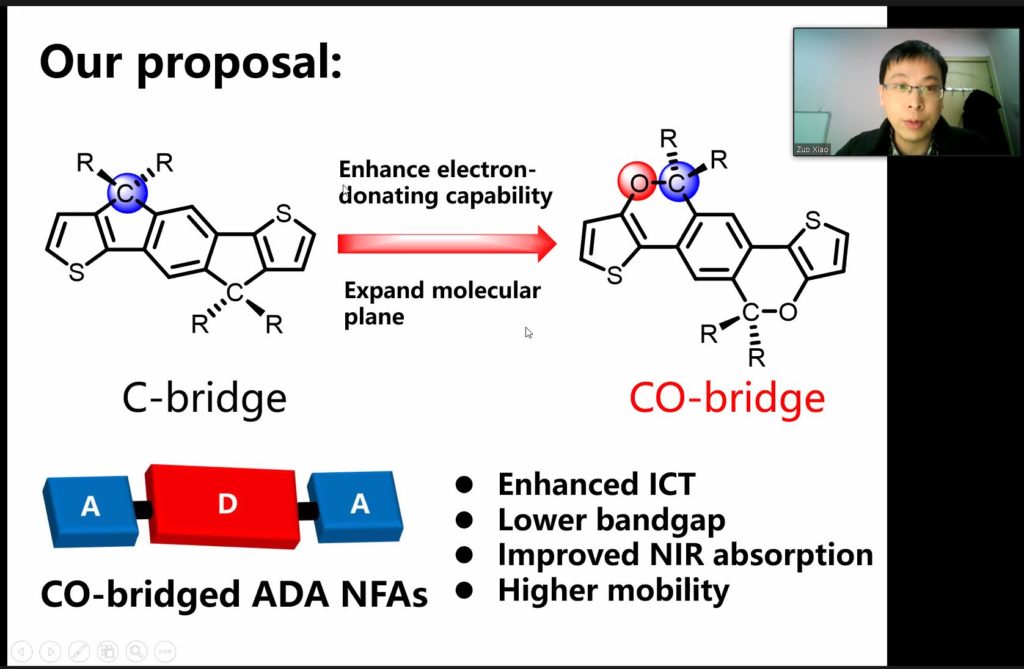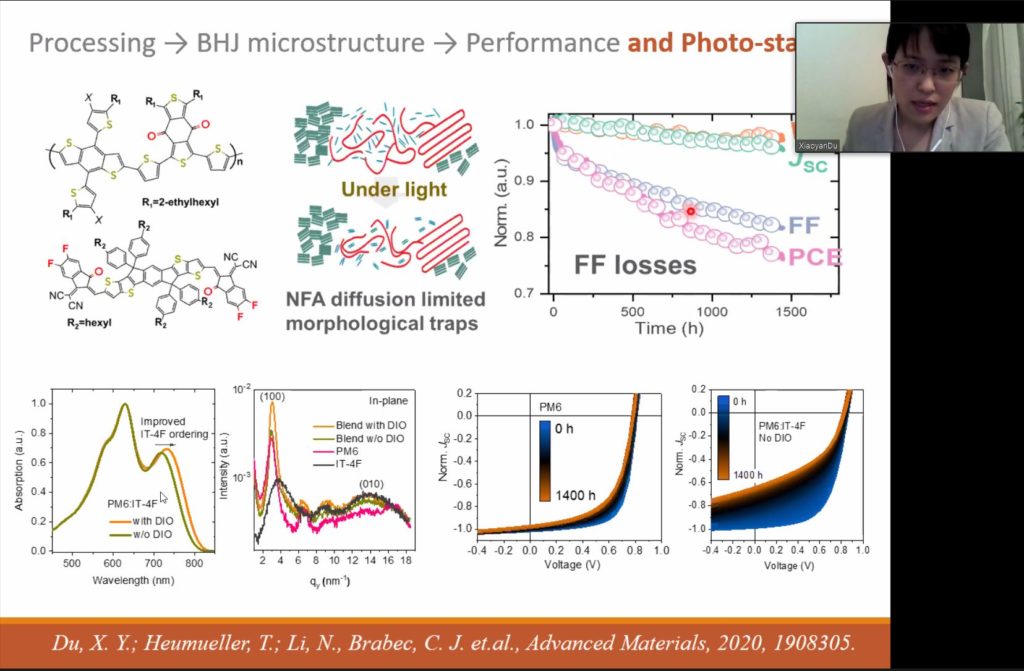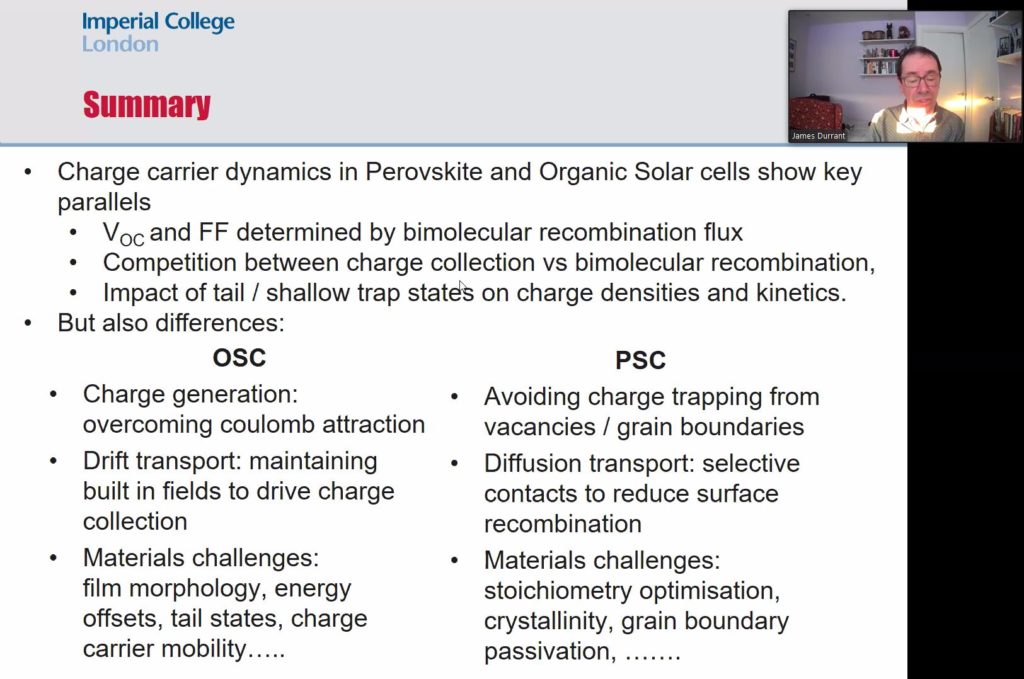Hot Topics Session 2
In the first talk of the second Hot Topics Session Prof. Zuo Xiao reviews the development of non-fullerene acceptors and polymer donors towards the current certified record OPV cells with efficiencies >18% in a single junction. For the donors the most promising materials are fused ring polymers. With D18:Y6 the efficiency could be pushed beyond 18% with <87% EQE in the maximum.

In her talk titled “Elucidating the full potential of OPV materials with AMANDA and machine learning” Dr. Xiaoyan Du from the Helmholtz Institute Erlangen-Nuremberg reports on her work combining Automation together with Machine learning in order to investigate the effect of molecular engineering on photostability. To do this she investigated a large number of cell variations based on PM6:Y6 and analyzed their performance in efficiency and stability with Gaussian Process Regression.

In the last contribution of the session Prof. James Durrant compares the charge carrier dynamics between OPV and Perovskite solar cells. He finds a number of similarities, while also pointing out key differences.


